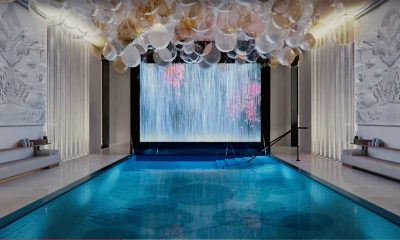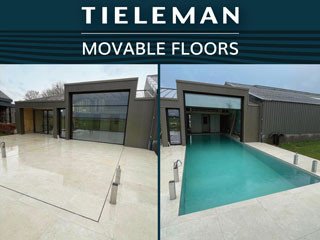Op Editorials
Mark Zuckerberg Plans To Build a Survival Bunker With a Pool
Facebook founder Mark Zuckerberg plans to build the ultimate survival bunker complete with its own swimming pool.
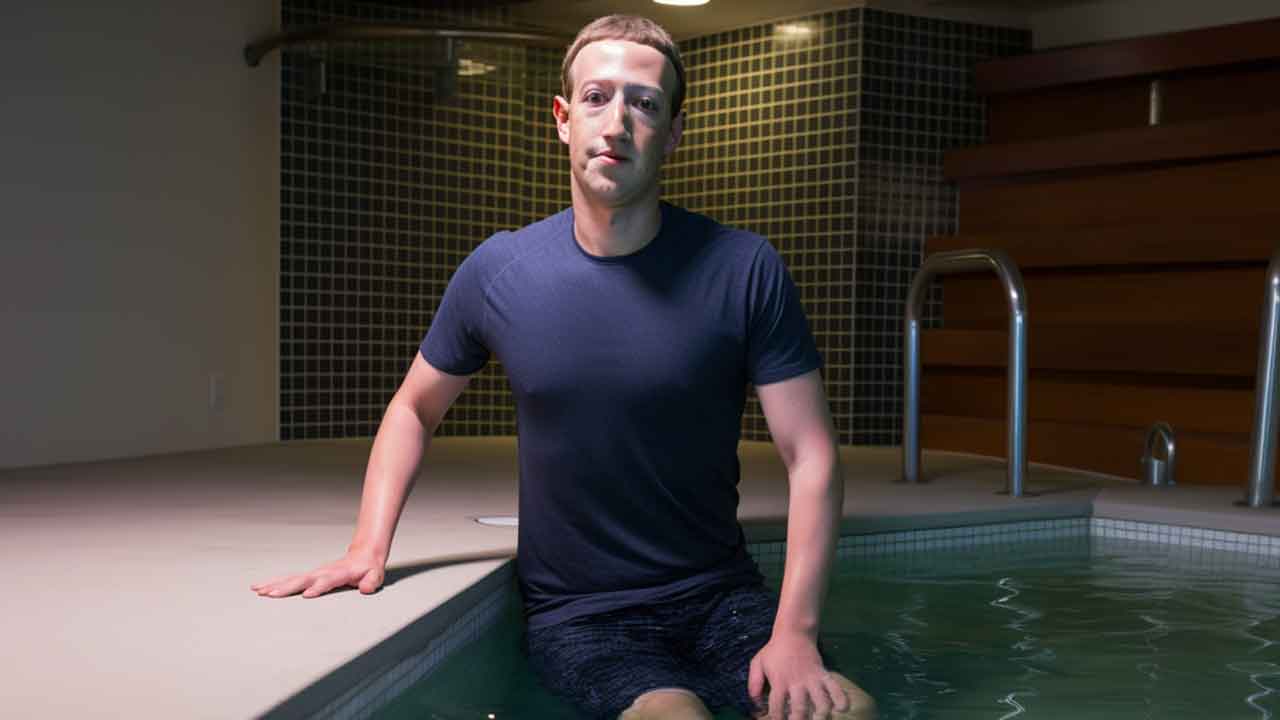
Mark Zuckerberg, the founder of Facebook and the brains behind the metaverse, is planning on building a lavish new compound complete with an underground survival bunker. According to an exclusive investigation by Wired, the billionaire doomsday prepper is shelling out some serious coin to build the estate, with costs rumored to exceed a whopping $100 million.
Details Emerge About Plans For a Luxury Estate Complete With a Doomsday Bunker
Based on information from both public records and a confidential insider, Wired has disclosed that Mark Zuckerberg’s estate is on the verge of completion. The primary living quarters comprise over a dozen buildings, featuring a remarkable 30 bedrooms and 30 bathrooms. Central to the compound are two colossal mansions, rivaling the size of a professional football field, equipped with offices, elevators, conference rooms, and an expansive industrial-grade kitchen. Evoking a sci-fi ambiance, numerous doors within the compound will be soundproofed, operated through keypads, or designed as “blind doors” seamlessly blending with the surrounding walls.
A tunnel is rumored to connect the two mansions, providing a discreet pathway to the bunker. An additional structure on the estate is set to include a full-size gym, pools, a sauna, a hot tub, a cold plunge pool, and a tennis court. Adding an adventurous touch, 11 treehouses, connected by rope bridges, allow guests to navigate between structures without setting foot on the ground. Notably, Zuckerberg has reportedly hosted at least two corporate events on the property, showcasing the multifaceted nature of this extraordinary compound.
This End of Days Bunker Comes With a Swimming Pool
The compound named Koolau Ranch, sits on Zuckerberg’s purchased land, a tropical haven he bought for a cool $170 million. With plans for the new development leaked, a 5,000-square-foot underground shelter with all the bells and whistles is apparently envisioned to make surviving the end of days a five-star experience.
The investigation by Wired referenced information from sources and planning documents acquired through requests for public records. The documents detailed that the primary residences will be accompanied by a 5,000-square-foot underground shelter, complete with living spaces and an emergency escape hatch.
As plans continue to take shape, one of the most intriguing aspects of the project has surfaced – an 18-foot water tank and pump system. Speculations are rife about its purpose, with rumors circulating that this colossal water reservoir is more than just a contingency plan for the apocalypse. Could it be a key component in Zuckerberg’s ambitious underground pool project?
Billionaire tech moguls are apparently sparing no expense when it comes to preparing for a doomsday scenario. A tell-all book called Survival of The Richest by Douglas Rushkoff reveals that these bunkers are equipped with cutting-edge technology, state-of-the-art security systems, and amenities that make five-star hotels blush.

In the unlikely event of an apocalypse, one can’t help but imagine Mark Zuckerberg’s friend requests suddenly resembling Jim Carrey’s inbox in Bruce Almighty. Forget about FarmVille requests; now it’s all about securing a spot in Zuck’s luxury bunker-ville! Picture this: while the world outside is in chaos, inside the bunker, Zuckerberg’s getting notifications like, “Hey Mark, long time no apocalypse, can I crash at yours?”
As the doomsday clock ticks away, Zuckerberg’s friend count might skyrocket faster than a viral cat video. Everyone from old high school buddies to that guy who accidentally poked him in 2009 will be sliding into his DMs, desperately seeking refuge in the ultimate VIP shelter. The allure of a bunker designed by the creator of the social network could turn Zuckerberg into the most sought-after doomsday BFF.

Interested in learning more? Good luck. Zuckerberg’s compound is now encircled by a 6-foot wall, and, as reported by Wired, an additional layer of confidentiality has been added to the project. Every contracted worker, regardless of their position or role, is said to have been required to sign non-disclosure agreements (NDAs) pertaining to their contributions to the property. This heightened level of secrecy suggests that specific details about the construction and features of the compound are likely to be tightly guarded and may not easily find their way into the public domain.
Featured Photo Credit: MidJourney AI
Talking Pools
Insights From Skimmer’s 2024 State of Pool Service Report
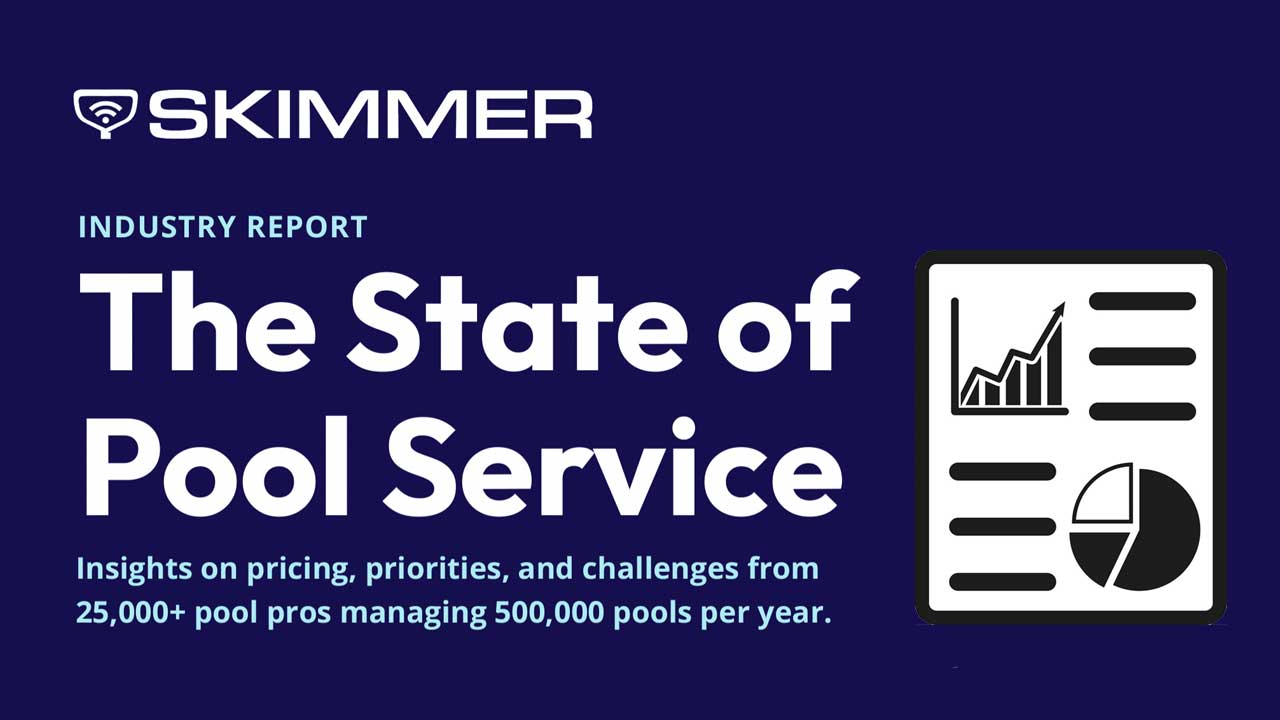
Skimmer, a leading-edge pool service software provider, recently unveiled its “2024 State of Pool Service Report,” a comprehensive analysis based on the invaluable feedback from over 1,700 pool service professionals who responded. This report delves deep into key facets of the industry, such as market challenges, business structures, pricing strategies, technology adoption, and growth plans. Notably, the report culminates from survey responses from Skimmer’s platform of over 25,000 users as well as insights gleaned from broader market research.
Rising Tides of Costs and Strategic Business Responses
One of the more eye-opening aspects to the report, 73% of surveyed pool service professionals reported a commendable upswing in revenue in 2023 compared to the previous year. However, the buoyancy in revenue was tempered by a prevailing concern – rising costs. The majority identified escalating costs as the most formidable challenge faced in 2023, with an anticipatory nod to this trend persisting into the unfolding year of 2024.
A significant number of companies are gearing up to address these rising costs by contemplating price adjustments, with nearly 74% of pool professionals signaling their intention to implement price increases in the current year to sustain revenue streams.
In an exclusive interview with Talking Pools Podcast, Jack Nelson, CEO of Skimmer, underscored this critical issue, stating, “Everyone in the industry feels like costs are going to keep rising. It’s unfortunately an inevitability with sort of inflation. The question is, what are we going to do about it? It’s really interesting to see that most respondents said they were planning on raising prices in order to maintain profit margins.”
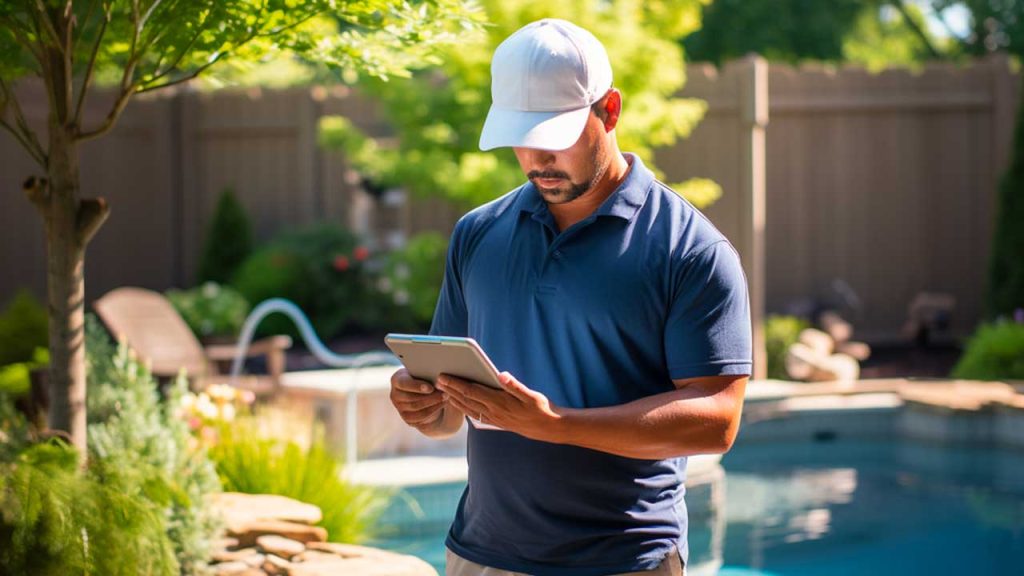
Workforce Dynamics and Marketing Strategies
Beyond the realms of financial strategies, the report casts its gaze on the dynamic workforce within the pool service industry. A noteworthy revelation is that 52% of respondents expressed an intent to expand their teams in 2024. This metric supports a positive indicator that most respondents believe the industry will continue to grow rather than contract.
One statistic you may find surprising, the report indicated that the majority of service technicians still rely heavily on the age-old method of word-of-mouth referrals, with only a modest 35% reporting that they’re investing in marketing. Nelson, who has experienced this sentiment first hand expressed that this way of thinking might be outdated.
“So many folks in the industry think they don’t need to pay for marketing because they get a lot of referrals,” said Nelson, “that’s true. You can grow your business that way, but you can grow it so much more quickly if you are spending a little bit of marketing. Because most of the industry is still not doing it, there’s a real chance to kind of take advantage of that. It’s a huge opportunity for ambitious pool service companies.”
Technology Integration: The Digital Oasis
In counterpoint to that, one area where the pool industry is embracing technology is business operations. One pivotal aspect of the report indicated an escalating integration of technology within the pool service industry. Approximately 75% of respondents revealed that they are leveraging software to streamline various aspects of their business operations. This underscores a growing acknowledgment of the pivotal role technology plays in enhancing efficiency, streamlining operations, and staying ahead in a competitive landscape.
“I think knowing your numbers is absolutely critical,” said Nelson, “so is embracing technology to operate your business more efficiently. That’s true whether it’s Skimmer or any other type of technology. I think there’s a tendency to underestimate the cost associated with doing business. Time is money. If you’re accepting a check from a customer because that customer refuses to get on ACH or credit card, there’s time associated with that cost. I think really understanding where you can automate different aspects of your business to save time and money is critical as costs continue to rise.”
Strategic Navigations for Future Growth
One noteworthy observation gleaned from the report is the success of companies that choose to bill separately for chemicals. Businesses charging customers separately for chemicals were on average more profitable than those who opted to include chemicals in the total price of service.
Including the price of chemicals has traditionally been a more straightforward, fixed-rate structure that is perhaps more easily grasped by pool owners and simplifies billing for pool professionals. However, the drawback lies in the susceptibility to frequent price adjustments due to significant fluctuations in chemical costs.
According to Skimmer’s data analysis, the model that charges extra for chemicals, known as the “plus chems” model, emerges as the most effective strategy in mitigating the impact of both fluctuating chemical costs and variations in weather patterns that might affect chemical usage, providing a robust buffer against such uncertainties.
Beyond immediate challenges, the report reveals a spectrum of strategic approaches pool service professionals are exploring for future growth. Notably, 33% of respondents expressed a nuanced interest in reducing their customer count while concurrently focusing on upselling more services and augmenting the overall value provided per pool serviced. Additionally, 43% are pinning their hopes on introducing operational efficiencies to curtail costs and bolster profitability.
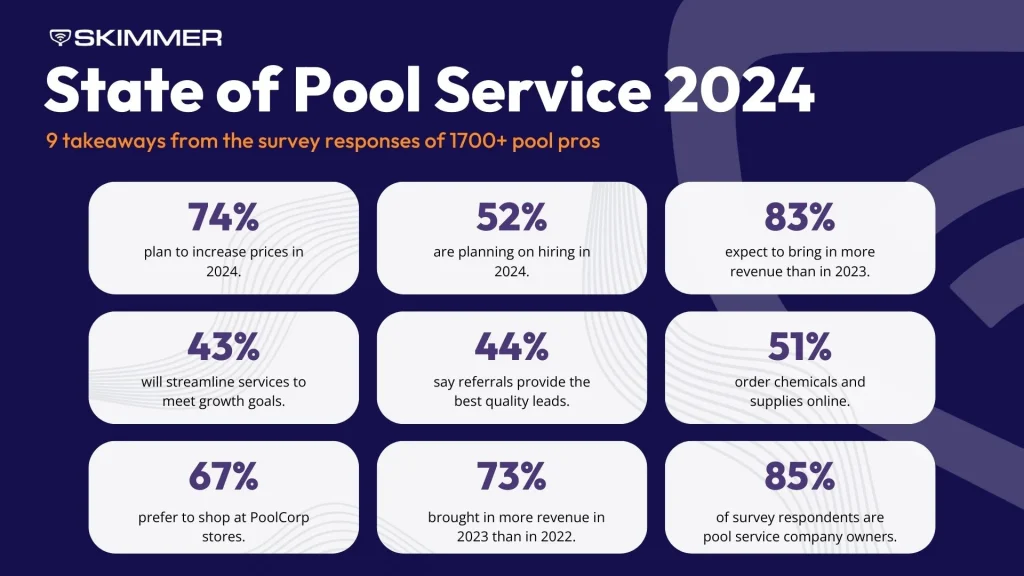
Want to take a deeper dive? Read Skimmer’s 2024 State of Pool Service Report or listen to the interview on the Talking Pools Podcast.
Op Editorials
Ground Penetrating Radar is Like X-Ray Vision For Pool Contractors
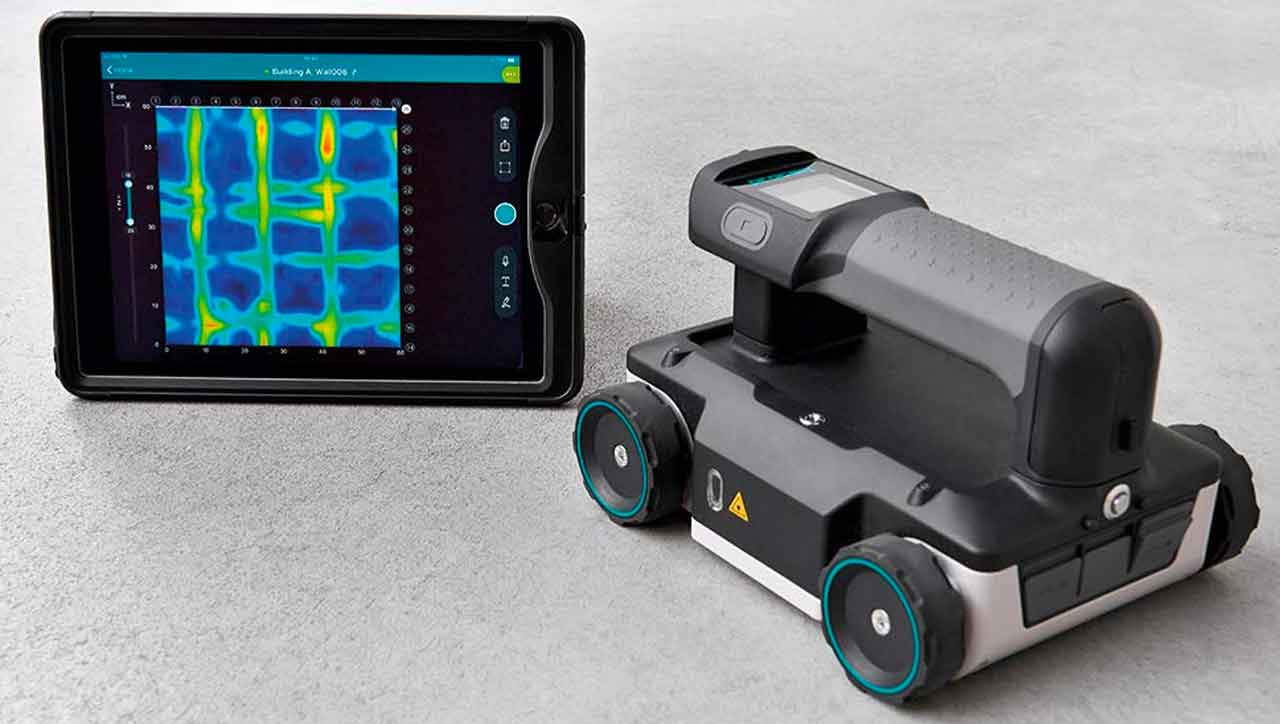
Ground Penetrating Radar (GPR) – allows contractors to actually “see” inside pool structures. GPR systems are perfect for locating reinforcing steel and determining the thickness of the concrete. Another helpful aspect of GPR is its use in locating elements inside of framed buildings, pipes, and conduits. Though these systems typically are priced at over $12,000, once prorated across many jobs, the cost is minuscule, while the benefits can be monumental.
What is Ground Penetrating Radar?
Ground Penetrating Radar is a geophysical method that uses radar pulses to image the subsurface of the ground. It is a non-destructive and non-intrusive technique commonly employed in various fields, including archaeology, geology, environmental studies, civil engineering, and utility detection. The primary purpose of GPR is to identify and map subsurface features, anomalies, or objects without the need for excavation.
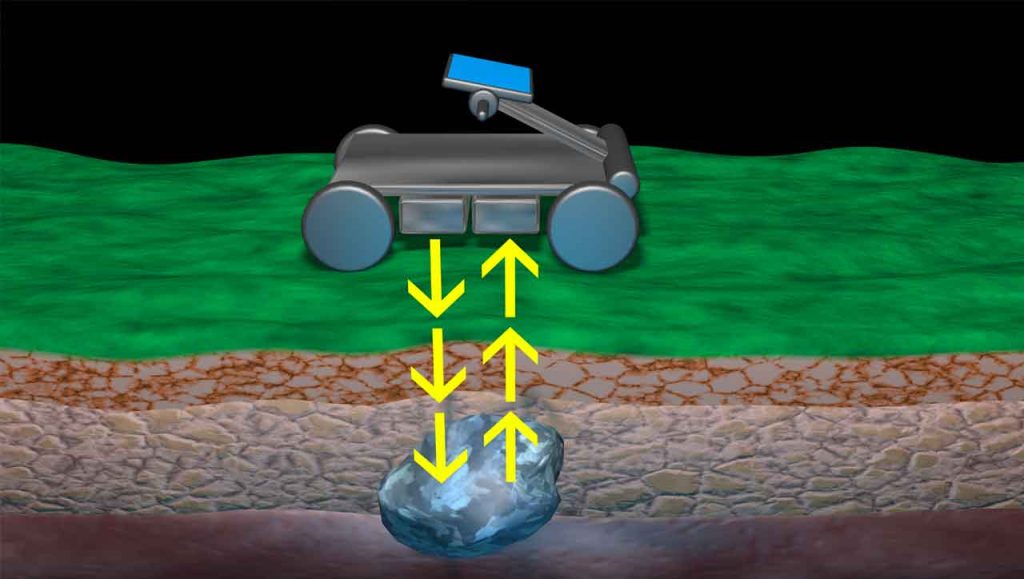
How Does It Work?
GPR works by emitting short pulses of electromagnetic waves into the ground. These radar pulses penetrate the subsurface and interact with different materials and structures. As the waves encounter boundaries between materials, some of the energy is reflected back to the surface. The GPR antenna receives these reflections, and the system processes the signals to create a detailed image of the subsurface. GPR is widely used for utility detection, subsurface mapping, and construction applications, providing valuable information without the need for excavation.
GPR For Pool Builders & Contractors
Today, construction technology is evolving. Ground Penetrating Radar (GPR) has become a valuable tool for pool builders and contractors in various aspects of their work. Here are some ways in which GPR can be beneficial for professionals in the pool construction industry:
- Locating Utilities
- Identifying Subsurface Anomalies
- Mapping Soil Stratigraphy
- Detecting Void Spaces
- Quality Control and Inspection
- Ensuring Compliance with Regulations
- Time and Cost Savings
Using GPR for Non-Destructive Testing
Today, there are a number of intelligent reasons to be using a ground penetrating radar to scan your pool shells. GPR is a non-destructive method to determine what is actually occurring inside of the concrete, without having to drill cores or demolish concrete. Radar allows experts to see the rebar schedule and depth within concrete. Pool construction professionals have even used them to validate the presence of bonding clamps and wire, when inspections were missed (for other contractors).
Use of Ground Penetrating Radar in Remodeling Swimming Pools
For contractors, being able to precisely locate the placement of the reinforcing steel is invaluable. When planning for coring a shell for pool lighting, add plumbing or coring for samples, it is critical to know where the steel is located. Hitting a rebar while coring can easily damage a $500 core bit. Worse yet, a handheld drill binds and kicks back, breaking the user’s thumb.
After stripping the plaster, scanning the shell can definitively determine if there’s sufficient shotcrete coverage over the steel. If it’s insufficient, then the pool can be “flashed” with additional shotcrete (at an additional charge). This will require new coping and tile as well, as the interior dimensions will change. In my own personal firm’s pool remodeling contracts, we have a disclaimer about shotcrete thickness. We will scan the shell for free, but if there is an inadequate amount of coverage, there will be a change order to add shotcrete and adjust the coping, tile and fittings. Think of this as a potential profit center. You can actually show the owners the location and depth of the rebar.

GPR companies charge $500-600 for a 1-hour visit. You can see how quickly owning a GPR unit can pay for itself. After a while, it will actually start earning you money! A Proceq GP8800 can be had for around $12,000 plus the cost of an iPad.
Photo Credits: Proceq
Op Editorials
History Of The Pool Cleaner
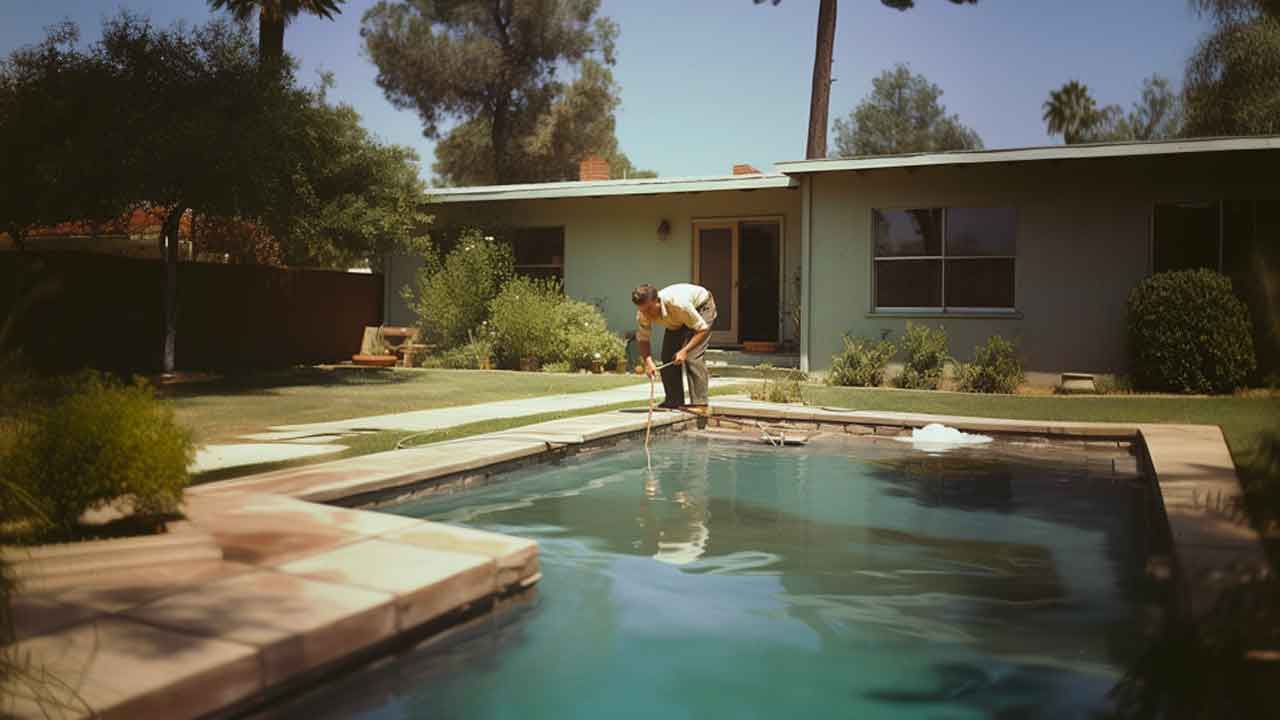
Now that I am starting to reflect over my past 69 years of active duty as a pool guy. Many of my friends have told me that I have seen a lot of history in our industry and that I need to start writing them down. With this in mind, Joe & Marianne Trusty and Carol Gigliotti of Pool Magazine have asked me to put down some of my pool history that I experienced over my career.
In 1955, my father decided to move his family from Oakland, California to the rich open spaces of Contra Costa County just a few miles away. At this time, there was starting to become a migration from the inter cities to the new suburbs in the country. Much of this was driven by the Post War GI Bill that all of our returning soldiers received after fighting in WWII. The GI Bill basically gave a serviceman low interest government loans to buy a new home.
This migration and the hopes for home ownership created a huge building boom as America started to get back on her feet, post-war. My dad was one of those returning soldiers after fighting in the Pacific Theater and being discharged in Oakland, California. My dad wanted something better for his family and the attraction of moving to the fast-growing suburbs along with being part of the building boom of those suburbs, had an important attraction for my father.
He moved us to a little town that was 15 miles east of Oakland and what seemed like a whole new world. The weather was warm during the summer and a perfect place to not only raise a family in the country but also to start a new business in an almost unheard of industry, the swimming pool industry. Up to this point, only the very wealthy could afford a swimming pool. However, all this was starting to change as young families started to move to the suburbs and they realized that the weather was perfect for a fast-growing family of Baby Boomers. Now with a new home that the GI Bill allowed these young families to buy, there began the development of the front and backyard.
My father was one of the early pioneers who had the vision and the ability to do something about it. He started his pool company just prior to us moving to the little town of Lafayette, California. Little did he know that this little town of 2,500 people at the time was going to become the center of growth of our industry. Now I’m not saying that the pool business started in Lafayette, however, it was at this time in the 50’s that American families all across the country were starting to experience the same revolution of young boomer families wanting to seek a better life by moving to the suburbs and all the lifestyle that came with it. These young families had a lot in common with each other besides many returning from WWII, taking advantage of the GI bill, having several young kids or Baby Boomers along with wanting a better way of life.
As the new neighborhoods or track developments started to spring up everywhere in our area, we started to see more and more families wanting to enjoy their backyards with their growing families and friends. It was at this time the weekend BBQ with your Weber BBQ became one of the most essential tools of anyones backyard. This outdoor California Lifestyle then found itself wanting more as people could afford more.

Enter the backyard swimming pool and all the enjoyment and entertainment that it brought to our families. My dad was on the ground floor of this movement. Back in those days, his swimming pools cost $2,000 all in. Of course it’s all relative when you realize what a gallon of gas costs ($.26) or what those first track homes in the suburbs cost under $10,000 for a 3 and 2 with a garage. The beauty of those starter homes is that the lot size was big enough for a modest 15×30’ pool with a little decking.
Landscape design and construction was very modest. There weren’t too many landscape architects and most were busy designing those large estates that could afford their designs. So the early years of the industry were very modest and builders such as the Anthony Brothers in Southern California catered to those fast-growing suburb homes by selling pools based on the financing more than the ability to build a pool. As Anthony Pools was taking a commanding lead out west, other markets around the country started to boom. Arizona had the Ghiz Family with Paddock of Arizona along with the Asti Family and Shasta Pools. On the East Coast we also saw the Sullivan Pools that all of these building families started to spawn other spin-off pool builders as the demand for owning a backyard swimming pool started to grow.
Prior to the boom in the 1950’s, here in California, there were two major high-end pool builders that were building pools for the rich and famous, Paddock Pools and Landon Pools. These two builders were instrumental in the engineering and mechanical development of swimming pools. Be it the sand and gravel filters that they used or the skim filter that Landon and Paddock used to try and simplify and reduce cost in their pools.
As more and more pools were being built by new pool builders, there became this demand to help invent more and more components to help make the backyard swimming pool more accessible and user-friendly. It was about this time in the 50’s that Anthony Pools helped create the early precast skimmer with a built-in basket outside of the pool. Prior to that there was the lily pad skimmer that was a floating basket that was attached to the lily pad suction plate that bobbed up and down with the water level as water was drawn from a separate suction line. These pools also had a separate main drain suction line as well. The real custom pools that Paddock built had an 1.5” flange fitting mid way on the pool about 12” below the surface for a home owner to actually vacuums their pools using a portable vacuum hose and head. At this same time we also have the Pool Master Jet Vac pool cleaner that hooked on the end of your garden hose and blew water into a large bag that could pick up leaves and not plug up the pump basket. The bag were designed to filter the water jetting up into the bag along with some dirt.
These types of cleaning systems were designed to help keep the pool somewhat clean. The reality was that once you built a pool, you had to contend with the drudgery of cleaning your pool every weekend or be rich enough to afford a pool maintenance company. This need for keeping the pool clean has spawned an entire section of our industry and it came about more by chance then anything else.
It was the late 50’s and early 60’s that one of the Pillars of our industry, Andy Pansini was just finishing up cleaning his pool using his vacuum cleaner on his pool in San Rafael area in the SF Bay Area. Andy was cleaning his decks after cleaning his pool and was using his garden hose to hose things down. The phone rang and Andy dropped his hose in the pool and answered the phone. When he returned, the hose had been snaking back and forth on the bottom of the pool and the pool was spotless where the hose was whipping back and forth.
The History of the Pool Cleaner
It is said that “Necessity is the Mother of Invention”. Andy realized at that moment that if he could manage the whipping hose in his pool then he could chase the dirt down to the bottom of the pool and without ever vacuuming his pool again, he could always have a spotless pool. Andy solicited the help of a fellow inventor, Howard Arneson, that lived across the bay. Howard was a creator, inventor and part showman. The two of them came up with some interesting variations of these first prototypes. I was fortunate in the mid 60’s to actually work on one of the very first of these prototypes that looked nothing of what we see today of the robotic pool cleaner.
As time went on Andy and Howard both started their own manufacturing companies. Andy and his wife Jan had started Jandy and Howard started Pool Sweep. Both were here in the San Francisco Marin County area. As more and more backyard swimming pools were being built, there became more and more need to keep them clean so you could enjoy swimming in a nice clean pool. This need for a clean pool created a new part of our industry called pool service and maintenance companies. It was at this time I started my first pool company. After years of working for my Dad’s pool company, at 16 years old, I had my driver’s license and a truck to put my maintenance cleaning equipment and chemicals in.
I was one of the first pool service companies in our area and was fortunate enough to acquire some very high profile pools that I cleaned each week. Back in those days you didn’t have a self-cleaning pool like today, that you mostly test the water and add chemicals to, once a week. Back then every pool was on twice a week service with the first visit as a brush and skim the pool along with cleaning the basket and filter visit. The second cleaning was dedicated to vacuuming the pool so it was ready for the weekend entertaining.
It was at this time I learned a lot about the drudgery of cleaning and maintaining the backyard pool. Cleaning swimming pools gave me a great appreciation for what it took in the building end of a swimming pool to make it easier on our clients. Let’s face it, the reason people build a swimming pool is to relax, enjoy their leisure time in the backyard with family and friends. It is not to become a slave to the maintenance of your pool.
As the Jandy cleaner and the Arneson cleaner became more and more popular to adapt to a pool, I was seeing more and more builders first install a dedicated return line for the robotic sweep and eventually those same builders realized that upselling a client on the advantages of installing a robotic cleaner made owning a swimming more enjoyable for the homeowner. As the Jandy Porpoise and Arneson Pool Sweep was taking the industry by storm, an inventor/businessman, Jim Edmundson was creating his version of the pressure pool cleaner called the Polaris. The uniqueness of the Polaris was that it lived on the bottom of the pool and did both sweeping and vacuuming of the pool. It had a leaf bag much like the early Pool Master Jet Vac manual cleaner except that it was part of the robotic cleaner and only needed to be cleaned once a week. There was one more entrance into the robotic cleaners on the West coast and that was from Sandy Campbell, who was in the Bay Area as well but soon moved his manufacturing to Redding, California. Sandy’s cleaner was called “The Letro Jet Vac”, it had some of the similar characteristic as the Polaris but it did a better job in high leaf areas.
While all these robotic cleaner wars were going on in California, over in Arizona, in the late 60’s and early 70’s, they were creating their very own cleaning systems to help battle the high sand content and debris that was plaguing swimming pools in that market. As I stated earlier, “Necessity was the Mother of Invention”. The Ghiz Family (Paddock Pools, The Paramount System) and the Ast Family (Shasta Pools, The A&A System) both created their proprietary in-floor cleaners for their own pools in that market. They along with a friend of mine, Les Mathews (Creator of the Caretaker System). All of these three inventor families helped usher in the next generation of pool cleaning. There was one other little-known infloor cleaner called the “Turbo Clean” that I recall seeing on some of the Geremia Pools out of Sacramento, Ca. Within a few short years, these manufacturers were selling their cleaners all across the country and internationally.
For the past 40 years, I personally have designed and worked with all three cleaners. For the past 25 years, my favorite in-floor cleaner is the PCC-2000 cleaner. What is it that makes this cleaner so special to me is it’s ability to clean the entire pool as Paramount and our team design the location of the cleaner heads. PCC-2000 also has it’s patented water curtain and the MDX that is it’s debris collection system. The robotic cleaners have their advantages in that they are a low cost compared to the Paramount in-floor system. In addition, as the design of our pools have come a long way from my dad’s pioneering days of simple, functional designs with simple filtration and no cleaners, to the designs that my son, Nicco and I are creating today with baja entries, ledges and seats throughout the pool.
We are all seeing the acceptance of engineered pools hanging off slopes with vanishing edges and “O” edge designs. These pools are so artistic that a robotic cleaner with its umbilical cord running around pool will surely take away from the beauty and artistry of the pools we are designing and building today.
What the in-floor cleaner is to me and even more specifically the Paramount PCC-2000 in-floor cleaner, is the beauty of the pool is not interrupted with the visual of the robotic cleaner. The additional circulation on the bottom of the pool that takes water from the skimmer level of the water and injects it back into the floor heads. This action creates not only bottom circulation better then any other way to circulate water in your pool, but it also takes surfaced solar heated water and injects it to the bottom of the pool so the entire pool becomes a heat storage battery for the solar heat that is collected at the surface.
More and more today our pools here in the Bay Area are safety cover pools with the spa under the cover to help keep the pool safe from small children, clean from dirt falling in the pool and energy efficient because of the passive solar heat that the cover generates at the top of the water that is pumped to the bottom of the pool through the in-floor cleaning system. Not only are we delivering a very clean pool to our clients, but a very efficient pool that cleans itself and a very artistic pool that is exciting to look at.
Our industry has come a long way since I joined in with my dad and now with Nicco, my son as the 3rd generation of our family to build well-engineered, unique designed and very efficient works of art for our clients backyard enjoyment and entertainment. It has taken 3 generations for our family to build the “State of the Art” custom pools that Nicco is now building for our company. As I stood on my father’s shoulder, now Nicco stands on mine, our family tradition has continued to advance the pool industry with our knowledge and forward thinking. It has been a wonderful journey as we all get to enjoy the rich history of our industry that has taken us to where we are today. Those early pioneers helped pave the way for the next generation of pool builders.
I will continue to add to the rich history of the swimming pool industry with my personal stories that all of us will enjoy as we discover where our roots come from.
-
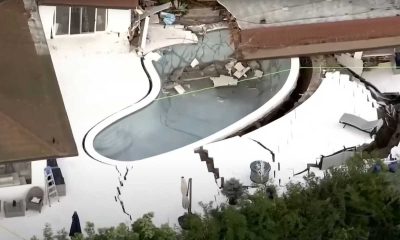
 Pool News4 weeks ago
Pool News4 weeks agoLandslide Damages Homes, Destroys Swimming Pool in California
-

 Manufacturer2 weeks ago
Manufacturer2 weeks agoSRS Distribution Announces Next Phase of Growth by Combining with The Home Depot to Better Serve Professional Customers
-
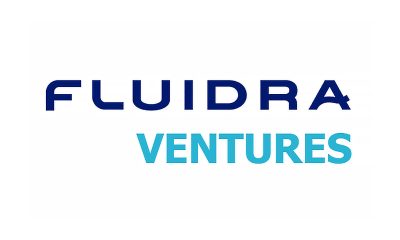
 Pool News4 weeks ago
Pool News4 weeks agoFluidra Launches €20 Million Venture Capital Fund – Fluidra Ventures
-
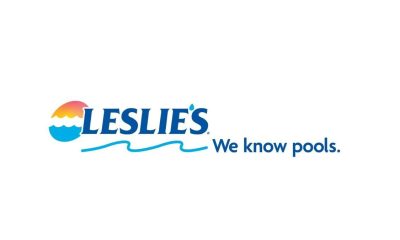
 Cleaning and Service Equipment and Supplies2 weeks ago
Cleaning and Service Equipment and Supplies2 weeks agoRecent Leslie’s/Harris Poll Study Shows Nearly Three-Quarters of Americans Mistakenly Assume Clear Pool Water Is Clean, Swim-Safe Water
-

 Manufacturer4 weeks ago
Manufacturer4 weeks agoBofA Downgrades Latham Group Citing Weak Pool Construction Market
-
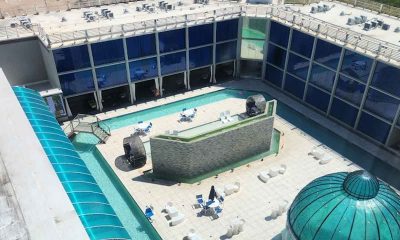
 Pool News2 weeks ago
Pool News2 weeks agoHotel Pool Had Numerous Violations in Case Where 8-Year-Old Was Pulled Into Pipe
-
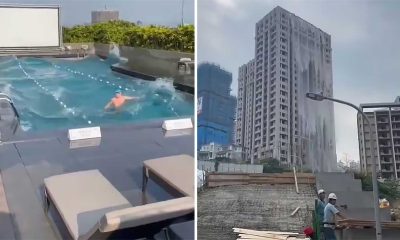
 Pool News5 days ago
Pool News5 days agoEarthquake in Taiwan Causes Waterfall From Rooftop Pool
-

 Equipment Supplies3 weeks ago
Equipment Supplies3 weeks agoFWP Faces Class Action Lawsuit Stemming From 2023 Cyberattack



